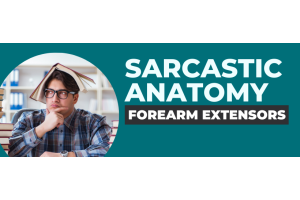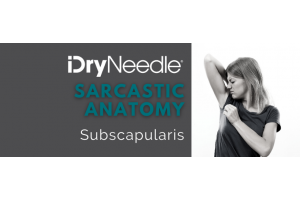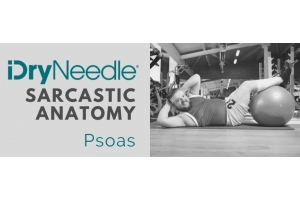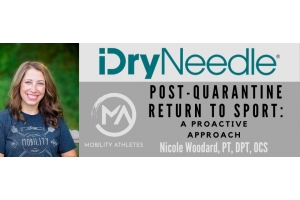
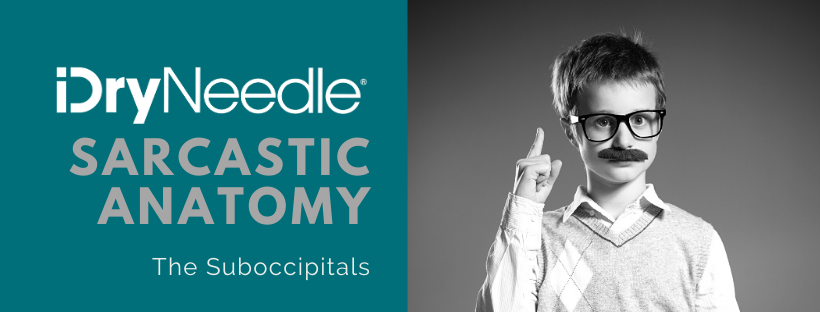
There are some muscles that subscribe so strongly to their herd-like group moniker and function, that they lose all unique individual distinction. I feel this way about the multifidi, lumbricals, and interossei. Like a stampeding crash of rhinoceroses, a sky-darkening murder of crows, or even a congregational bloat of hippos - no one cares about the identity and feelings of Roger the Rhino…the identity is all about the group.

But on a side note, I think it’s time to create quippy collective plural names for muscles. I have lots of ideas.
An intricacy of interossei.
A congress of deep neck flexors.
A brace of abdominals.
A boop of glutes. (some ideas are better than others)

But today’s focus will be on another collective contractile group, which are rarely appreciated as solitary structures based on their categorical similarities...
The suboccipitals.

Like a 4-member boy band tugging at the heart strings of tweengers everywhere, these myofascial heart-throbs are instafamous for actions such as capital extension, upper cervical rotation and lateral flexion, and all the arthrokinematics of the OA and AA joints. In school, we learn their names, what they do, and doodle their origin/insertions in our spiral notebooks like a teenage girl daydreaming about the “bad boy” baritone with a goatee. ...Oh, that was just me?
[my actual drawings from PT school]

Despite their various unique attachments and reciprocal recruitment, maybe it is OK for us to consider this a unified group performing in harmonious concert. First of all, splitting off into a solo career NEVER works out (JT doesn’t count).
But more sincerely, I contend they actually are designed to perform a single function, and it’s not movement of the head or neck at all! The primary role we rely on our little quartet to perform in perfect toe-tapping, synchronized-dancing, chart-topping unison is…PROPRIOCEPTION. Position awareness. Stress-strain feedback. And quite honestly, making sure our gaze remains horizontal (or at least know where horizontal is). Like the gimbal in a gyroscope, no matter what posture, position, activity, or environment we get ourselves into – the little boy band underneath the shelf of your occiput takes it upon themselves to give constant afferent feedback. They are truly the sensory “eyeballs” to our head and neck. And this is of major importance to our vestibular and visual systems - it’s called our righting reflex arc. (Note: not to be confused with the writing reflex, which is feeling the need to text someone back immediately, commonly associated with previous love interests, possible alchohol consumption, and most prevalent after midnight as you sit in your snuggie covered in chip dust).
Here is the evidence:
Exhibit A – Muscle spindle density.
In terms of muscle spindle density, the suboccipitals have some of the MOST muscle spindles per gram of tissue. Some data suggesting ~36 spindles/gram. Compare that to something like glute max, which has ~1 spindle/gram. Stupid glute.
But in very general terms, if the muscle spindle is the main sensory apparatus of our skeletal muscle organ, then a muscle with high muscle spindle density is likely designed for more proprioception, calibration and responsiveness; versus the opposite (like glute max) likely intended for power production of phasic or static forces.
Exhibit B – Pathological tension.
For some of you, once the word “suboccipital” was mentioned, the immediate correlation was pain, headaches, tightness/restriction, or poor posture. It’s unfortunate, but true. And this correlation adds to the mystique of why these muscles behave the way they do. Beyond the fact that these 4 little troopers are on the list of muscles attempting to hold the orange (our head) on top of our toothpick (our neck), it’s worth knowing that the suboccipitals can apply direct pressure on the occipital nerve. They also contain ‘myodural bridges’, which are strands directly connecting these muscles to our dura mater. Both of these are potential headache generating interfaces, and both of these improve with better postural awareness and cervico-cranial positioning.
“Umm, did Paul just say these muscles attach directly to my brain?”
PK answer – kinda.
Exhibit C – Oculo-muscular recruitment.
Yep, if you are good with breaking down words, this literally means there is a muscular tone change/recruitment of the suboccipitals when we move our eyes! Try it for yourself. Put your fingers just underneath the bony shelf of your occiput and glance left to right. It’s subtle, but it’s there. And guess what? This happens even when your eyes are closed! I assume your mind is blown, so I will mic drop and stop right there. But really, if that doesn’t connect the dots between muscle function and our visual system, I’m not sure what to tell ya. Clearly not a boy band fan.
To conclude, I have no doubt this sarcastic dissertation on the lesser-known characteristics of the suboccipitals brings up A LOT of questions. So I’ll start with you in the back…
Question - “Is it true you went to Walmart at midnight when ‘N Sync released “No Strings Attached” when you were in high school?”
PK answer – “Yes. And that’s all the time we have for questions.”
THE END
But for real, if you have questions on the suboccipitals or even how dry needling can improve headaches, neck pain, and other boy band-related dysfunction - shoot us a comment on social media (@iDryNeedle) or join our iDryNeedle Dry Needling forum on Facebook!











